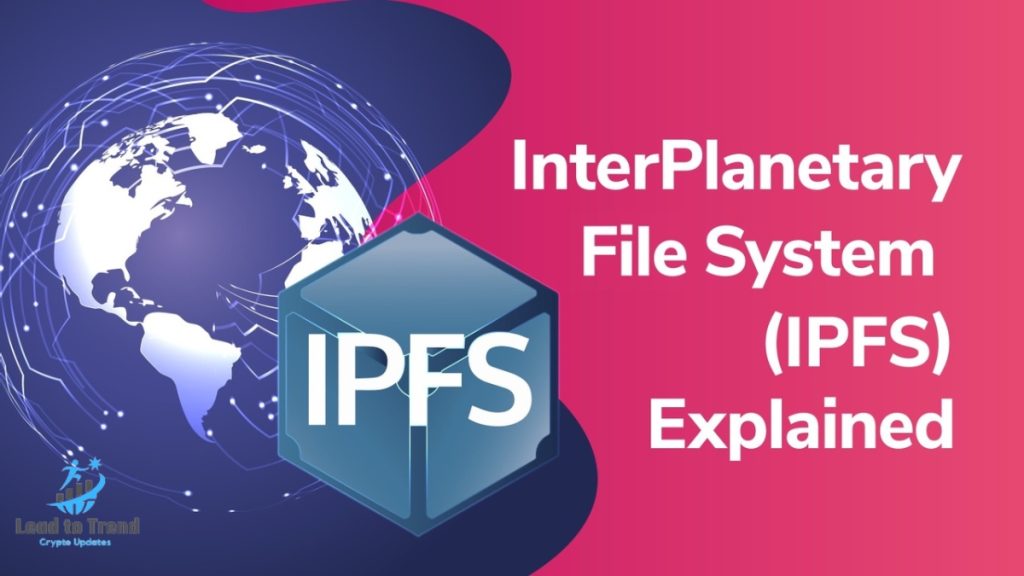What is the InterPlanetary File System (IPFS), and how does it work? Global use of the World Wide Web, but data organized in one area. Primarily owned by the business, computer systems or cloud platforms hold real or virtual machines. You can get your data from these servers. Therefore, users must join over HTTP or HTTPS. The most common method of sending files online, HTTP, has issues. Due to its low cost, it can only deliver little files and doesn’t use new techniques. Moving petabytes of data, keeping up with large quantities of immediate media streams, and maintaining file consistency are continuous issues. More file access and decentralized storage are essential.
Mirror servers and CDNs can distribute “origin” server material to customers. Even with these protections, only a few locations can access files. To solve this, IPFS was set up. IPFS is a decentralized network that enhances Web3’s capacity for storing and retrieving files. IPFS has the potential to make the internet more user-friendly and secure.
What is IPFS, and how does it work?
Protocol Labs created Filecoin FIL $3.79, a blockchain-based cryptocurrency for keeping and accessing files. They also run IPFS, which was created by Juan Benet in 2015.IPFS is a peer-to-peer (P2P) network that lets people store, view, and share data, websites, programs, and files. IPFS is decentralized and uses methods for saving data like BitTorrent. The centralized and decentralized webs have different ways of finding and getting info. Location-based URLs make it easier for people to access their online data stored by known companies.
However, IPFS uses a content-addressed approach to help people find information. Each IPFS material has a unique CID. Censorship and manipulation become more complex when data exists and is accessible using hash rather than exact coordinates. On a network of computers called nodes, IPFS stores and maps keys to values using distributed hash tables (DHT). DHT nodes store keys and their mapped values and can obtain fundamental values if needed.
IPFS nodes store and share data. Requesting nodes cache files and webpages. Because so many people need to access the same data, caches develop. Any node or group that has the file can fulfill requests. Multiple data delivery and request fulfillment locations boost efficiency and accessibility.
Is IPFS a Blockchain?

IPFS and blockchain are decentralized technologies with different uses and properties. IPFS creates a global, distributed data archive and sharing system. By storing files in several locations, standard web protocols become censorship-resistant and accessible even if some nodes go offline.
Blockchain, on the other hand, is an open ledger that records transactions in an immutable fashion. Blockchain employs cryptography and consensus to ensure data integrity. Ethereum, smart contracts, and decentralized banking all use blockchain. Blockchain and IPFS are not the same thing. Blockchain makes it easy to check and audit transactions, while IPFS saves and shares files.
What is IPFS used for?
IPFS is a distributed file system for easy global file sharing. IPFS may be added to public blockchains and P2P networks. This may improve Ethereum-based DApp scalability. IPFS’s smart contract integration makes safe, low-cost storage more accessible, enhancing Ethereum’s performance. However, Data storage is rewarded via IPFS and Filecoin. This combination can significantly impact NFT data production and storage. IPFS can scale DApps and revolutionize NFTs with vital data records.
Is IPFS traceable?

The DHT can be queried for the IP address of any IPFS node by using its corresponding public PeerID. IPFS is an open system that facilitates free peer-to-peer file sharing. Nodes in the network keep data associated with globally consistent CIDs and share it with other nodes using DHTs that are accessible to the public. IPFS communication between nodes is encrypted, but nodes’ PeerIDs and data CIDs are not. IPFS gives the public access to these data.
Limitations of IPFS
IPFS adoption is hard. Raising awareness, addressing user concerns, and offering IPFS transition resources can fix this. Users and institutions may need time to adjust to significant information access and distribution changes. However, IPFS requires interoperability. For compatibility, it must support existing web protocols while replacing HTTP as the internet access protocol. Upgrading this link’s web infrastructure may be costly and time-consuming.
Getting IPFS users to donate is another challenge. IPFS uses rewards and incentives to deliver and store data on a P2P network. Users’ actions and contributions sustain and grow the IPFS ecosystem. However, IPFS must be protected like other technologies. Data-sharers fear IPFS security. IPFS encrypts and addresses network data. However, these methods are flawed. Ongoing security upgrades and threat mitigation must protect IPFS user data.
However, The fact that IPFS is free and spread out helps with security and privacy. However, changes made from the inside can’t be made, so improvements must be issued often. IPFS may revolutionize decentralized and secure storage by promoting usage, ensuring system reliability, paying rewards, and improving security.
The Future of IPFS
Since 2014, more and more people have been using the IPFS P2P network to share files. This is because it has unique features that differentiate it from the client-server system. Financial and media organizations like the protocol because it makes DApps much easier to use on a large scale. Because IPFS is global and content-addressable, it will revolutionize the web. IPFS may transform how people store, distribute, and access their online files. As technology advances, more capabilities will be introduced, and more people will utilize it.


